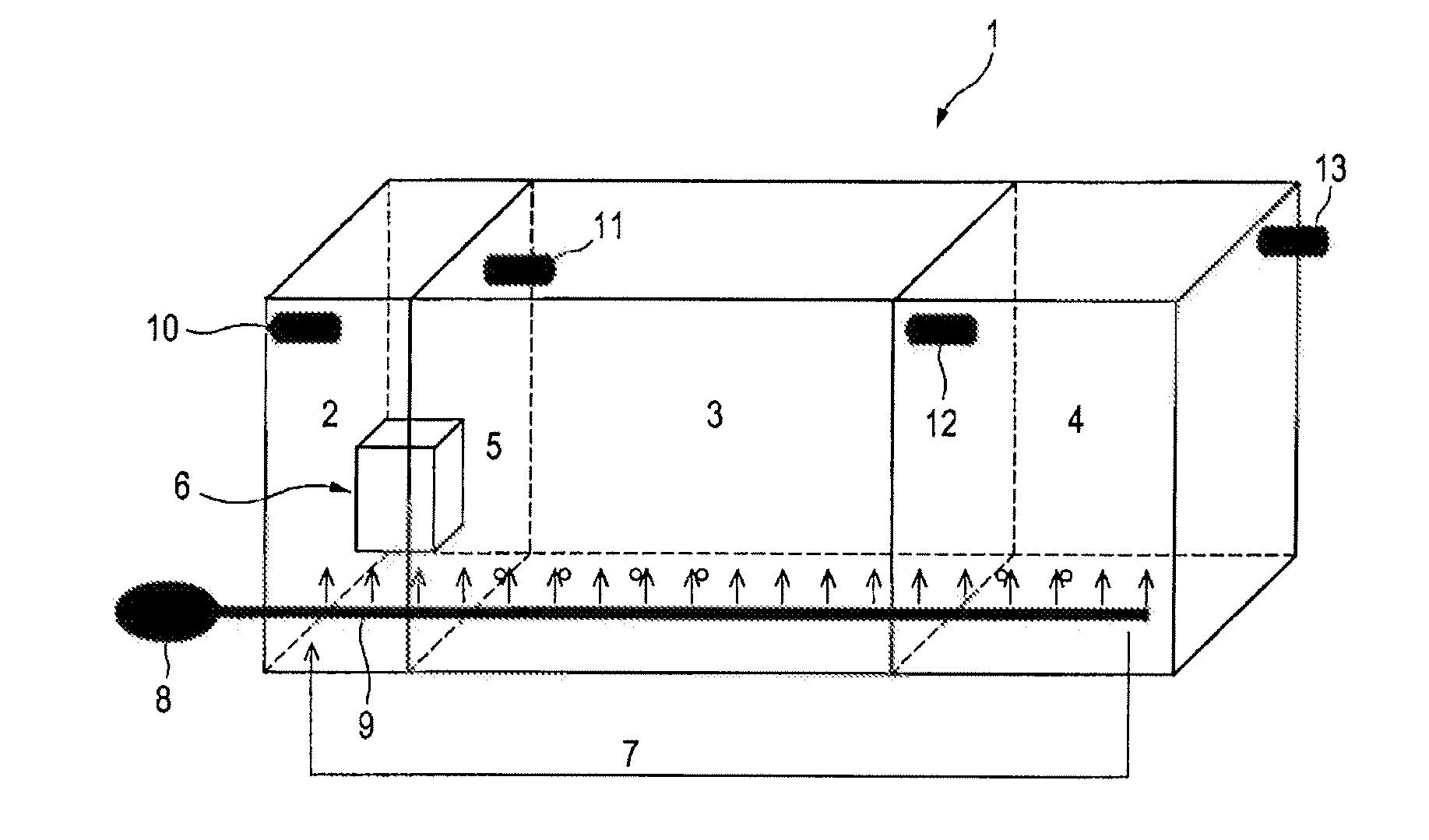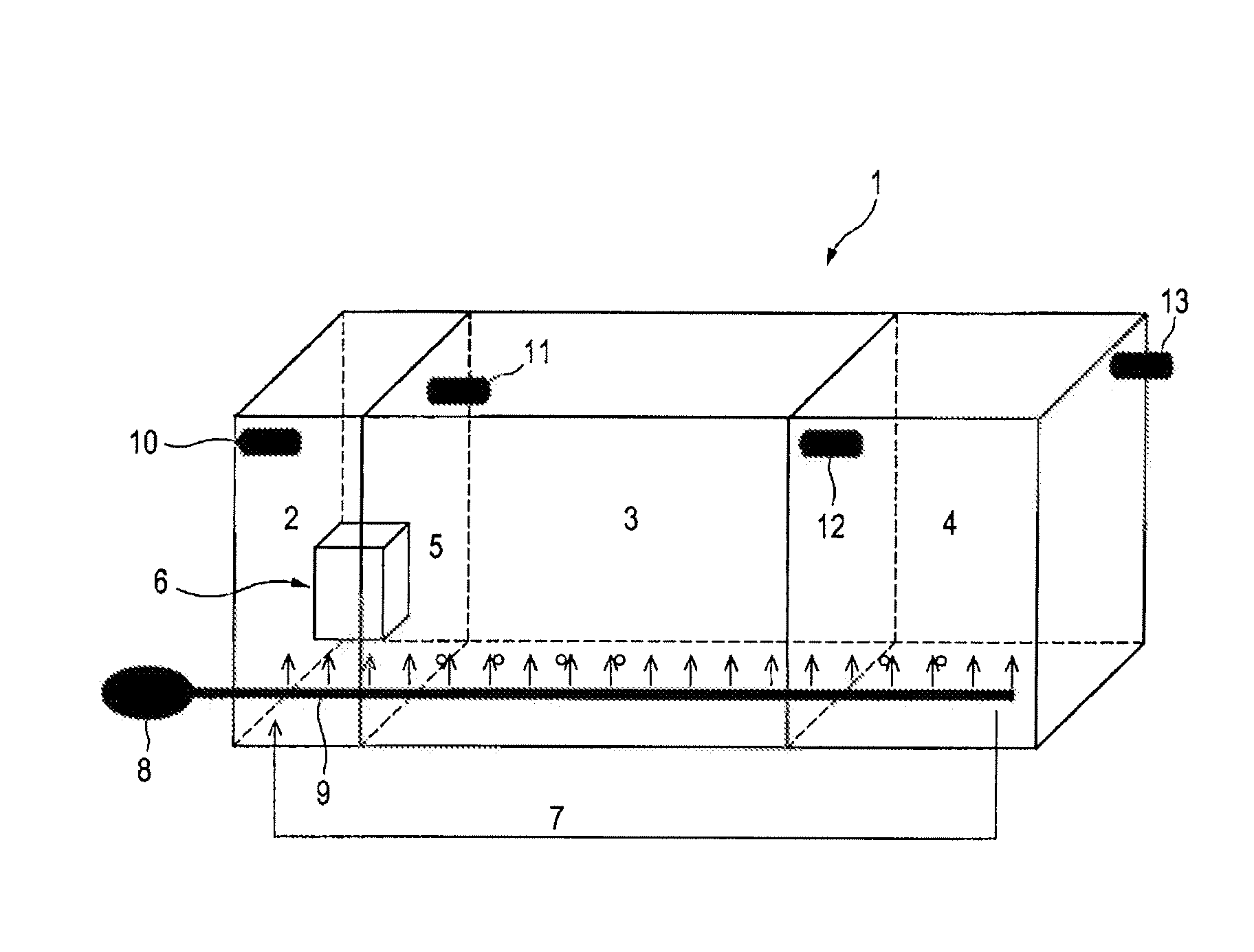Apparatus for deodorizing sewage treatment plant sludge by using native microorganisms
a technology of sewage treatment plant and microorganisms, applied in the field of deodorizing apparatus, can solve the problems of large quantity of organic materials contained in the sludge, unsanitary, and unsanitary, and achieve the effect of effectively removing malodors
- Summary
- Abstract
- Description
- Claims
- Application Information
AI Technical Summary
Benefits of technology
Problems solved by technology
Method used
Image
Examples
example 1
Preparation of Native Microorganism Colonies
[0035]In order to use in the deodorizing apparatus using native microorganisms according to the present invention which is designed to remove malodors of sewage treatment plant sludge, colonies of native microorganisms were prepared as follows.
[0036]First, a 2,000 l nutrient broth for fermentation (3 g beef extract, 5 g enzymatic digest of gelatin, pH 6.8±0.2) was prepared and poured into a fermentation tank having a 3,000 l capacity, and then sterilized using high pressure steam at 121° C. for 15 minutes. Bacillus subtilis BSDL1 (KFCC-11399P) and Bacillus megaterium DSM3 (KFCC-11402P) were cultured in a nutrient broth for cell proliferation for 24 hours and the culture broth were inoculated into the above fermentation tank and then cultured until endospores were completely formed at a culture temperature of 24-26° C., pH of 6.6-7.0, where the amount of air flow and agitation speed were controlled to maintain a saturation value for dissolv...
example 2
Evaluation of Deodorizing Effect Using Artificial Wastewater
[0037]To verify the deodorizing effect of the deodorizing apparatus using native microorganisms according to the present invention which is designed to remove the malodors of sewage treatment plant sludge, the deodorizing capability of a colony of native microorganisms was examined by carrying out experiments in a laboratory scale where malodors of artificial wastewater containing various malodorants were removed.
[0038]The deodorizing experiments were performed batchwise. Two 100 ml flasks containing artificial wastewater comprising 1.12 ppm of ammonia (NH3), 12.6 ppb of hydrogen sulfide (H2S), 1.2 ppb of methyl mercaptan (CH3SH), and 7.2 ppb of methyl sulfide ((CH3)2S) were prepared. To one flask, the colony of native microorganisms prepared according to Example 1 above was added and then the flask was sealed, while the other flask was sealed without adding the colony of native microorganisms. Malodors generated from each ...
example 3
Evaluation of Deodorizing Effect Using Sludge Containing Night Soil
[0041]In order to examine the deodorizing effect of the colony of native microorganisms prepared according to Example 1 above against the actual sludge, the following experiments were conducted with a primary sludge containing night soil and a secondary sludge as raw water.
[0042]Specifically, a reactor including a native microorganism activating tank, a first deodorizing tank and a second deodorizing tank having capacities and instruments as shown in Table 2 below was constructed with acryl. In the native microorganism activating tank, a native microorganism activator filled with the colony of native microorganisms prepared according to Example 1 above was installed. For each case of treatment processes with or without colony of native microorganisms of the present invention, the (CH3)2S content in the primary sludge containing night soil and the secondary sludge was analyzed by gas chromatography. The retention time...
PUM
| Property | Measurement | Unit |
|---|---|---|
| retention time | aaaaa | aaaaa |
| retention time | aaaaa | aaaaa |
| temperature | aaaaa | aaaaa |
Abstract
Description
Claims
Application Information
 Login to View More
Login to View More - R&D
- Intellectual Property
- Life Sciences
- Materials
- Tech Scout
- Unparalleled Data Quality
- Higher Quality Content
- 60% Fewer Hallucinations
Browse by: Latest US Patents, China's latest patents, Technical Efficacy Thesaurus, Application Domain, Technology Topic, Popular Technical Reports.
© 2025 PatSnap. All rights reserved.Legal|Privacy policy|Modern Slavery Act Transparency Statement|Sitemap|About US| Contact US: help@patsnap.com


